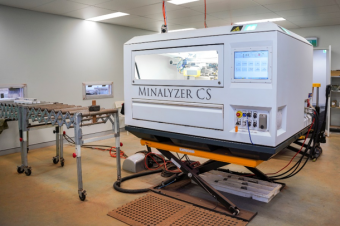Mines to build advanced geosciences lab for non-destructive analysis of drill core
Researchers at Colorado School of Mines are teaming up with Swedish company Minalyze AB to build an advanced geosciences research laboratory for non-destructive compositional analysis of drill core.

Only a few universities in the world have access to such cutting-edge core scanning capabilities. In the mining industry, diamond drilling is used to probe the viability of exploration sites and to evaluate known ore deposits.
“This new laboratory establishes Mines as a global leader in this emerging field with important applications in the development of Earth resources such as the critical minerals needed in the manufacturing of clean energy technologies,” said Thomas Monecke, director of the Center for Advanced Subsurface Earth Resource Models (CASERM) at Mines. “Minalyze’s choice of CASERM as a research partner is a testament to the caliber of our faculty and students we have, and the establishment of the new research facility will help our research team to advance solutions for the mining sector and contribute to our fundamental understanding of the geological processes resulting in the concentration of metals in the Earth’s crust.”
The new laboratory will support research conducted within CASERM, a collaborative research venture between Mines and Virginia Tech that is supported by a consortium of mining companies and federal agencies aiming to transform the way geoscience data is used across the mining value chain. CASERM forms part of the I/UCRC program of the National Science Foundation.
In addition to ore deposit research, the new core scanning laboratory will offer unparalleled opportunities for undergraduate and graduate student education.
Annelie Lundström, Chief Executive Officer of Minalyze AB, added, “We are excited to collaborate with the CASERM research team and look forward to helping build a strong future in Earth resource research at Mines and Virginia Tech."
Initial research using the new analytical capabilities will focus on the identification of elemental enrichment and depletion patterns around ore deposits that were caused by the interaction of ore-forming fluids with the host rocks during deposit formation. Identification of these vectors to ores requires the use of machine learning techniques that are currently developed and tested by the CASERM research team. In addition to data science, the research team is planning on conducting method developments involving the integration of additional sensors in the core scanner.




